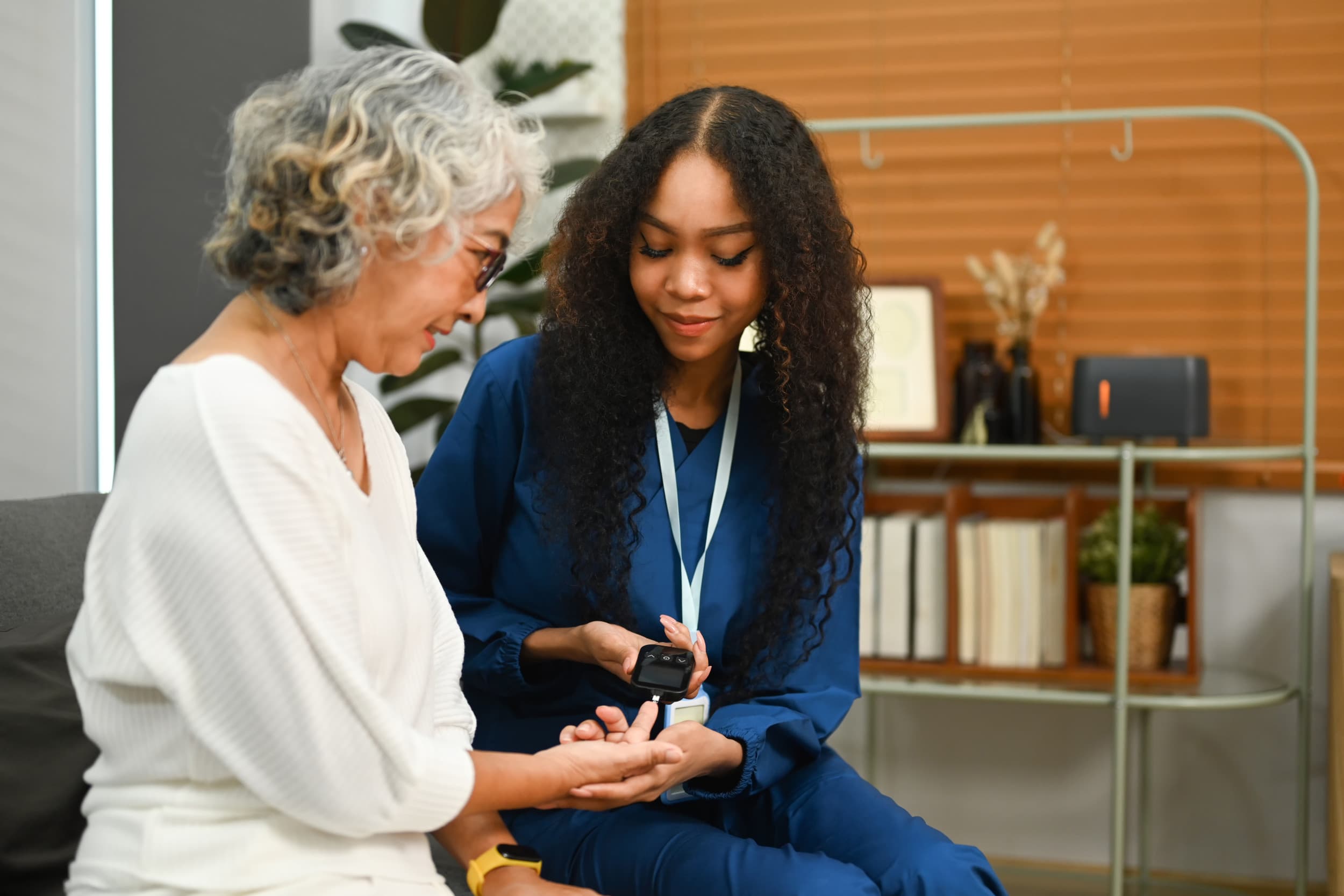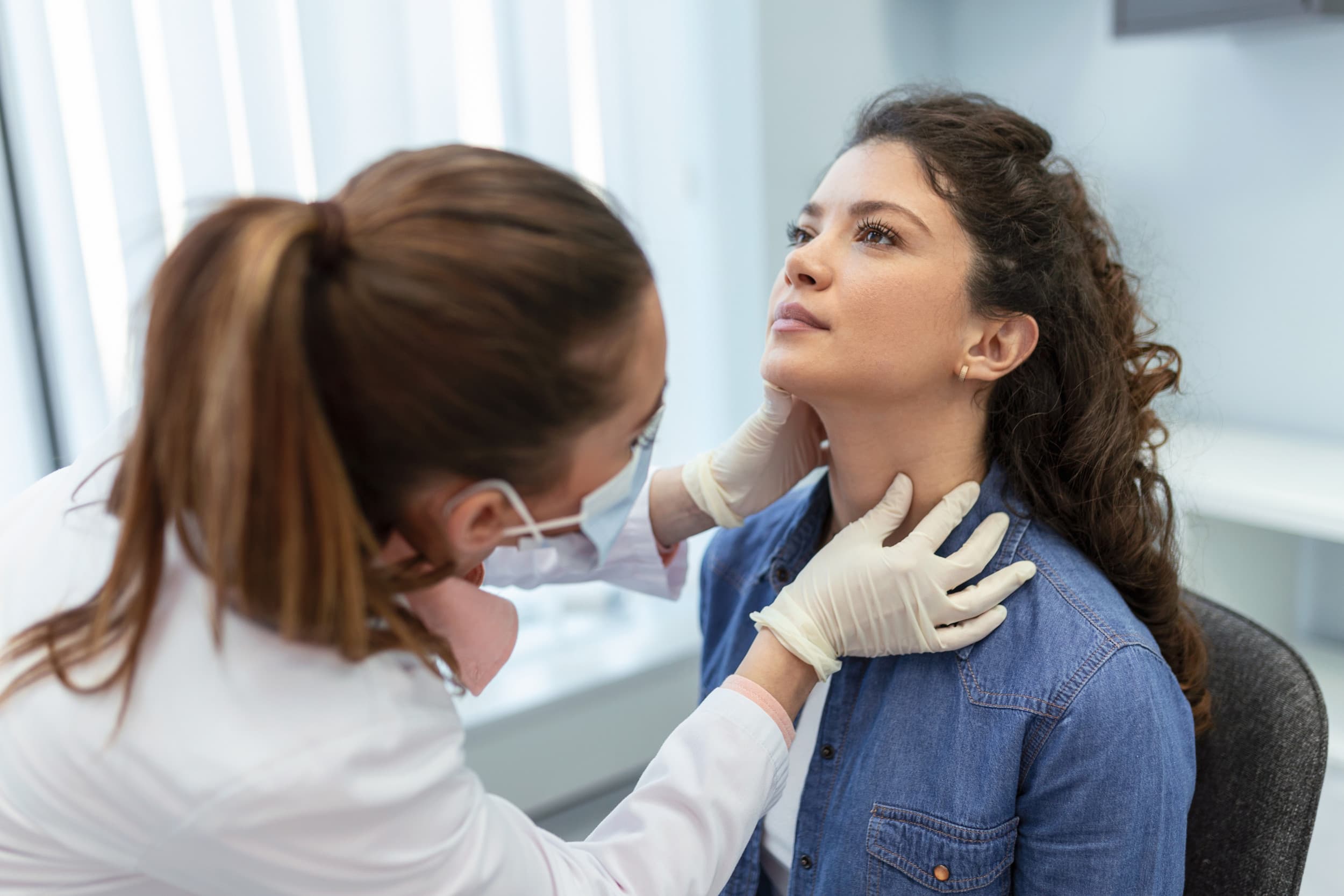How Preventive Care Can Help with Seasonal Affective Disorder

9 Minutes

Team Curative

Dec 18, 2024
For millions of Americans, winter’s charm brings an unexpected companion — Seasonal Affective Disorder (SAD).
It’s more than just the “winter blues.” SAD is a form of depression that can feel like an uphill battle, even as holiday lights twinkle and friends toast the season. You're not alone if you’ve ever felt unusually drained or found it hard to shake a lingering sadness as the days get shorter. Let’s dive into what seasonal affective disorder is, who it affects, and how you can take preventive care measures for yourself — or help a loved one — through its seasonal challenges.
What is Seasonal Affective Disorder?
Seasonal Affective Disorder (SAD) is a type of depression that follows a seasonal pattern. It typically begins in late fall and continues through the dark, chilly winter months. Experts at the National Institute of Mental Health explain that SAD stems from changes in your body’s natural rhythms, which are disrupted when daylight becomes scarce. This disruption can significantly impact your mood, energy, sleep, and overall outlook on life, making preventive health measures all the more important.

Symptoms of seasonal affective disorder
While the experience varies from person to person, if preventive health measures haven’t helped, common symptoms of seasonal affective disorder include:
Feeling sad or hopeless most of the day, nearly every day
Low energy and persistent fatigue
Difficulty concentrating or staying focused
Changes in appetite, often with cravings for carbohydrates
Oversleeping yet still feeling tired
Losing interest in activities that usually bring joy
For some, these symptoms may seem mild — just a “funk” they hope will pass. But for others, SAD can feel like a heavy weight, making even the simplest tasks overwhelming.
Who is at risk for seasonal affective disorder?
SAD doesn’t play favorites, but certain factors make some people more vulnerable. According to research, about 10 million Americans experience SAD each year, with women four times more likely than men to be affected. Age is another factor: younger adults, especially those aged 18-30, are more at risk.
Where you live also matters. People who reside farther from the equator are at greater risk due to shorter days and reduced sunlight during the winter months. If you've ever wondered why folks in northern states like Alaska report more cases of SAD, now you know — it’s all about the sunlight. Add in genetic factors, such as a family history of depression or mood disorders, and you might see how some people are more predisposed to experiencing SAD, whether or not they take preventive health measures.
What causes seasonal affective disorder?
Experts are still researching the exact causes of SAD, but they have identified several contributing factors that create a perfect storm of environmental, biological, and psychological triggers — each one amplifying the other.:
Reduced sunlight exposure: Shorter days can disrupt your body’s internal clock, which helps regulate sleep and mood.
Serotonin levels drop: Less sunlight means lower serotonin levels, which are the brain chemicals that boost mood.
Melatonin imbalance: The lack of light can confuse your body’s production of melatonin, a hormone that affects sleep.
Vitamin D deficiency: Sunshine is your best source of vitamin D, which plays a role in mood regulation.
Genetics: A family history of depression or SAD can make you more susceptible.
Interestingly, SAD doesn’t only strike in winter. A less common form, known as summer-onset SAD, can cause depression during warmer months, often triggered by high heat and humidity.
How is SAD diagnosed?
If you suspect that you’re dealing with Seasonal Affective Disorder (SAD), the first step is to talk to your healthcare provider. While it might be tempting to self-diagnose based on symptoms, it’s important to have a professional evaluation. Other health conditions — such as thyroid issues or more complex mental health disorders — can cause symptoms similar to SAD. A thorough assessment ensures you get the correct diagnosis and, more importantly, the proper treatment.
What happens during an evaluation?
Your healthcare provider will begin by asking detailed questions about your symptoms, including their timing, severity, and duration. They may ask about patterns in your mood, sleep, and energy levels throughout the year. If your symptoms align with SAD, they might refer you to a psychiatrist or psychologist for a deeper evaluation. These mental health professionals specialize in diagnosing mood disorders and can help identify whether you have SAD or another type of depression. A healthcare provider may also ask you to complete a questionnaire to assess your mood and energy levels in relation to the seasons. This tool helps mental health professionals confirm if your symptoms fit the criteria for SAD.
Are there any tests for SAD?
There's no specific blood test or imaging scan that can indicate SAD. However, your healthcare provider may order specific tests to rule out other medical conditions that can mimic SAD symptoms. For example, a thyroid test can check for hypothyroidism, a condition that can cause fatigue, low energy, and mood changes similar to those experienced with SAD.
Diagnostic criteria for SAD
To be diagnosed with SAD, you’ll need to meet specific criteria based on the pattern and severity of your symptoms. These include:
Experiencing symptoms of major depression, such as sadness, low energy, changes in appetite, and trouble concentrating
Having depressive episodes that occur consistently during a specific season, such as late fall or winter
Experiencing these seasonal episodes for at least two consecutive years
Noticing that these episodes happen more frequently during a particular season than at any other time of year
Why professional diagnosis matters
SAD is often part of a broader mental health picture and may overlap with conditions like generalized depression or anxiety. A professional seasonal affective disorder diagnosis can uncover additional factors contributing to your symptoms and help shape a preventive health treatment plan tailored to your needs. By working with a healthcare provider, you'll better understand what's causing your symptoms and how to manage them effectively. If you think you might have SAD, don't hesitate to reach out to your provider. An accurate seasonal affectiveness disorder diagnosis is the first step toward feeling better and reclaiming your energy, regardless of the season.
Along with preventive health measures, how is SAD treated?
The great news is that managing Seasonal Affective Disorder is possible through a combination of treatment options tailored to your symptoms and lifestyle. Let’s take a closer look at the primary treatments.
Light therapy
Since the 1980s, light therapy has been a foundational treatment for winter-pattern SAD, which compensates for the reduced natural sunlight during the darker months by exposing individuals to a bright light source that mimics daylight. Patients sit in front of a specialized light box with an intensity of 10,000 lux — approximately 20 times brighter than standard indoor lighting — for 30–45 minutes each morning, typically from fall to spring. Research shows that light therapy can quickly improve symptoms for many people. However, it works best when used consistently in a daily routine.
Psychotherapy
Psychotherapy, or "talk therapy," helps individuals address and manage the thoughts, behaviors, and habits that contribute to depression. A specialized approach called Cognitive Behavioral Therapy for SAD (CBT-SAD) focuses on replacing negative thoughts about seasonal changes (like winter darkness or summer heat) with more positive perspectives. It also incorporates behavioral activation, encouraging patients to engage in enjoyable activities to offset feelings of isolation or disinterest. Studies show that CBT-SAD and light therapy are equally effective in reducing SAD symptoms. Light therapy often produces faster results, but the benefits of CBT-SAD tend to last longer, particularly as a preventive health tactic against relapses across multiple seasons.
Antidepressant medication
Medications used to treat depression, particularly selective serotonin reuptake inhibitors (SSRIs), are another practical option for managing SAD. These medications adjust serotonin levels in the brain, which are often disrupted in people with SAD. Antidepressants improve mood by modifying the brain’s use of serotonin and other mood-regulating chemicals and
typically take 4–8 weeks to take full effect. Early improvements are often seen in sleep, appetite, and concentration, with mood-lifting later. Finding the proper medication may require trial and error, as everyone’s response to these treatments varies. All medications can have side effects. Discussing your options with your healthcare provider before starting or stopping any medication is essential.
Vitamin D
Many people with winter-pattern SAD experience a vitamin D deficiency because reduced sunlight limits the body’s ability to produce this essential nutrient. If you live in an area with limited sunlight, take preventive health measures and get your vitamin D levels tested. Although research results are mixed, vitamin D supplements may help some people improve their symptoms. Some studies suggest it’s as effective as light therapy, while others show little to no effect. If you're considering taking vitamin D supplements, consult your healthcare provider. Vitamin D can interact with other medications, so professional guidance is crucial.
Preventive health tips to manage SAD
Taking care of yourself is essential when managing SAD. Research shows that small, consistent changes to your daily routine can make a big difference. Try these self-care strategies:
Get outside during daylight hours, even if it’s cold.
Exercise regularly to release feel-good endorphins.
Stick to a sleep schedule to improve energy levels.
Focus on eating a balanced diet with plenty of fruits, vegetables, and whole grains.
Incorporate stress-relieving activities like yoga or meditation.
Spend time with loved ones to maintain social connections.
Think of these practices as building blocks to support your mental and physical health through the season.
How to support a loved one
If someone in your life is struggling with SAD, your support can be invaluable. Here are some simple ways you can help:
Suggest outdoor activities to help them get sunlight exposure.
Plan regular catch-ups to keep them socially engaged.
Offer to cook a healthy meal or go grocery shopping together.
Encourage relaxation techniques like yoga or deep breathing.
Help them explore healthcare options, including therapy or light boxes.
Above all, let them know they’re not alone. Small acts of kindness and encouragement can go a long way.
Curative: supporting you every step of the way
At Curative, we prioritize preventive health — no matter the season. Whether you’re managing SAD or supporting someone who is, our benefits are here to help:
Mental healthcare: Access in-person or teletherapy sessions to discuss challenges with a licensed professional.
Nutritional counseling: Learn how food choices can improve mood, energy, and overall health.
ClassPass membership: Stay active with access to fitness studios and gyms, boosting your energy levels year-round.
Pelago support: The holiday season often brings social gatherings. Get the tools you need to manage alcohol consumption and stay in control.
By prioritizing your health and well-being, you can face any season confidently with Curative. Learn more about this innovative approach to preventive health and better insurance for all.
About Curative
Curative is a health plan employees love for its affordability, engagement, and simplicity. With $0 copays and deductibles, members can get the care they need when they need it without the financial burden. Imagine — a health plan that delivers better health without hurting your wallet.
Curative members have access to virtual health services to stay well. For quick and easy care, use Curative Telehealth through the Member Portal. For mental health support, explore our mental health resources to find the right platform for you. ders.
To see all disclaimers, please view them here.
Resources
Cleveland Clinic. (2022, April 10). Seasonal depression. https://my.clevelandclinic.org/health/diseases/9293-seasonal-depression
CNN. (2024, January 20). Physical activity and seasonal sadness: How exercise can help. https://www.cnn.com/2024/01/20/health/physical-activity-seasonal-sadness-wellness/index.html
Johns Hopkins Medicine. (n.d.). Seasonal affective disorder (SAD). https://www.hopkinsmedicine.org/health/conditions-and-diseases/seasonal-affective-disorder#:~:text=Seasonal%20affective%20disorder%20(SAD)%20is,antidepressants%20can%20help%20treat%20SAD
Sign up for our Newsletter
Table of Contents
What is Seasonal Affective Disorder?
Who is at risk for seasonal affective disorder?
What causes seasonal affective disorder?
How is SAD diagnosed?
Along with preventive health measures, how is SAD treated?
Preventive health tips to manage SAD
Curative: supporting you every step of the way
Resources








